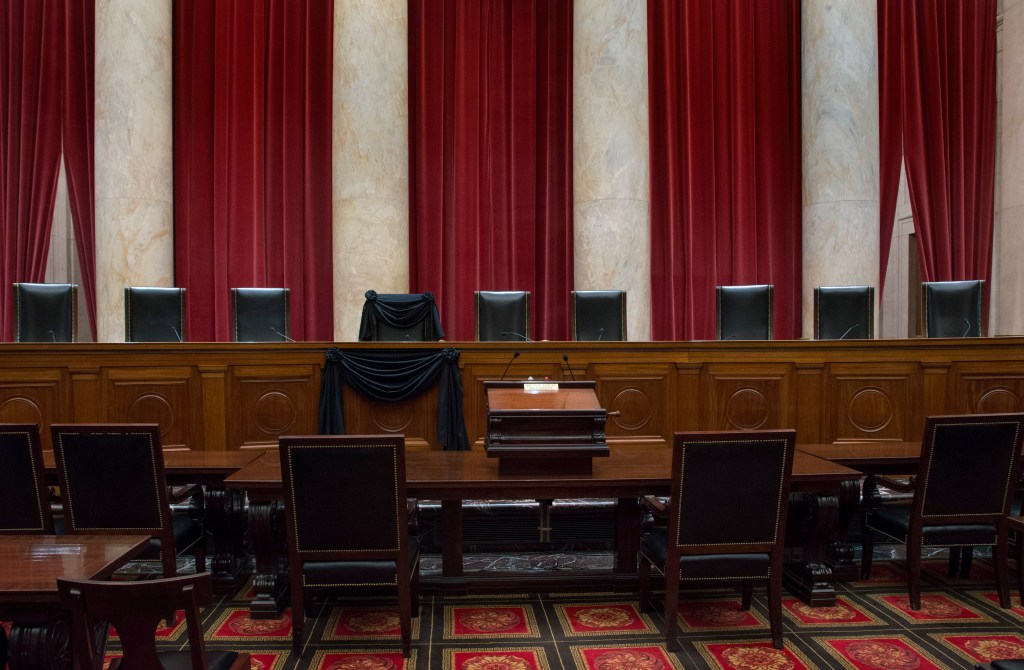Trending
Source: Handout / Getty
On Tuesday, a full panel of federal appellate court judges convened to decide whether it could be argued that Texas Republicans in Galveston County violated the Voting Rights Act when they split up a predominantly Black and Hispanic voting district, creating another predominately white district instead—which has become a GOP trend across red-state America.
As previously reported, the newly drawn GOP map had already been struck down by a Trump-appointed judge, US District Judge Jeffrey Vincent Brown, who said it was “stark,” “jarring,” “egregious” and “mean-spirited,” and should have added that it was unethical, discriminatory and racist AF. Unfortunately, due to what CNN described as “some eyebrow-raising procedural maneuvering last year by the 5th US Circuit Court of Appeals,” the redistricted map is still in effect in the 2024 election while the appellate court decides if it will overturn Brown’s ruling. However, no decision was made Tuesday as the judges were split on whether any civil protections for Black and Latino voters were violated.
Actually, according to the Texas Tribune, the judges weren’t tasked with determining if Galveston County commissioners discriminated against Black and Latino voters simply by dismantling a district. Instead, they are to decide whether a coalition of Black and Latino voters should be granted the same protections as a single racial group under the 1965 Voting Rights Act. (Yeah—they’re about a second away from implementing a “racial draft” like on Chapelle’s Show.)
From the Tribune:
Some appellate judges on Tuesday warned that extending protections to groups of minority voters would result in an avalanche of discrimination claims.
But others were open to including coalitions in the Voting Rights Act as a means of preventing voter dilution.
“What the Supreme Court has said is that the Voting Rights Act should be interpreted in a manner that provides the broadest scope possible in combating racial discrimination,” Judge Dana Douglas said.
Nicolas Riley, a lawyer for the Justice Department, argued that Galveston County’s redistricting efforts harmed both Black and Latino voters. Thus, those two groups of voters should be interpreted as a single “class” under the Voting Rights Act given they were similarly injured. Riley rejected the definition of class in the federal voting legislation to refer to a single racial group.
Judge Edith Brown Clement said this interpretation would extend the precedent set by Thornburg v. Gingles, a 1986 Supreme Court case that affirmed that a North Carolina redistricting plan had unlawfully discriminated against Black voters. If the Justice Department’s interpretation of coalition was correct, then the Supreme Court would have stated so in previous rulings, Clement said.
Seriously—can we just acknowledge how ridiculous this debate is and how much it screams, “white privilege?”
Source: Anoa Changa / Anoa Changa
What we and the judges know is that Galveston County intentionally broke up a congressional district dominated by Black and brown voters in an effort to dilute the voting power of a bloc that typically votes Democrat. (Because what’s a little systemic racism if it means a red wave in 2024, amirite?) What the judges are tasked with deciding is if a voting district comprised of two non-white racial groups can get the same protection as a district with only one dominating non-white racial group. So, basically, if the district had only been predominately Black or Latino, this would have been a much simpler case to decide, but since it’s a mix of both non-white races, it’s an entire political kerfuffle that is overloading the circuits of the system of default whiteness, and the Black and Latino voters who challenged the racist GOP map are left wading in the water while waiting for judges to decide to what degree their collective voting rights matter.
“You’re creating a rule that will ask the impossible racially, both for people who have mixed minorities or for mixed groups that have different interests,” Judge Stephen Higginson said. “What happens to an Afro-Latino? Does that person have to choose which minority interests they affiliate with to get protection?” (And y’all thought I was just joking about the “racial draft.”)
Anyway, the panel of judges didn’t indicate when an official ruling would be made. So, the voters of color just have to wait and see while, as usual, not a single predominately white voting district in the state has to worry about being disturbed. That’s America for ya!
SEE ALSO:
Georgia Bill That Makes Voting ‘More Difficult’ Signed Into Law; ACLU Threatens To Sue
Super Tuesday Voter Suppression Suspected In Alabama’s Newly Drawn Black Voter District
The post Judges Split On Texas County’s Racist Redistricted Voting Map Violates Civil Protections For Black/Latino Voters appeared first on NewsOne.
Judges Split On Texas County’s Racist Redistricted Voting Map Violates Civil Protections For Black/Latino Voters was originally published on newsone.com
Who You Got? A Complete List of Drake & Kendrick Lamar Diss Songs Right Now
Jaleel White's Wedding (And Wife!) Cause Not-So-Surprising Frenzy On Social Media
Rest In Power: Notable Black Folks Who We’ve Lost In 2024
Anita Baker Gets Caught Up In The Rapture Of Angry Aunties After Canceled Concert In ATL
Brian McKnight’s Detroit Concert Canceled After Deadbeat Dad Allegations, Social Media Piles On
The Peaches Are Picked: See The Official ‘Real Housewives Of Atlanta’ Season 16 Cast
Van Hunt Posted His Girlfriend Halle Berry’s Cakes In A Mother’s Day Post And We Can’t Stop Staring
Battle Rapper Lady Luck's Biggest Battle: From Suicide Attempt to the Light
We care about your data. See our privay policy.
An Urban One Brand
Copyright © 2024 Interactive One, LLC. All Rights Reserved.

